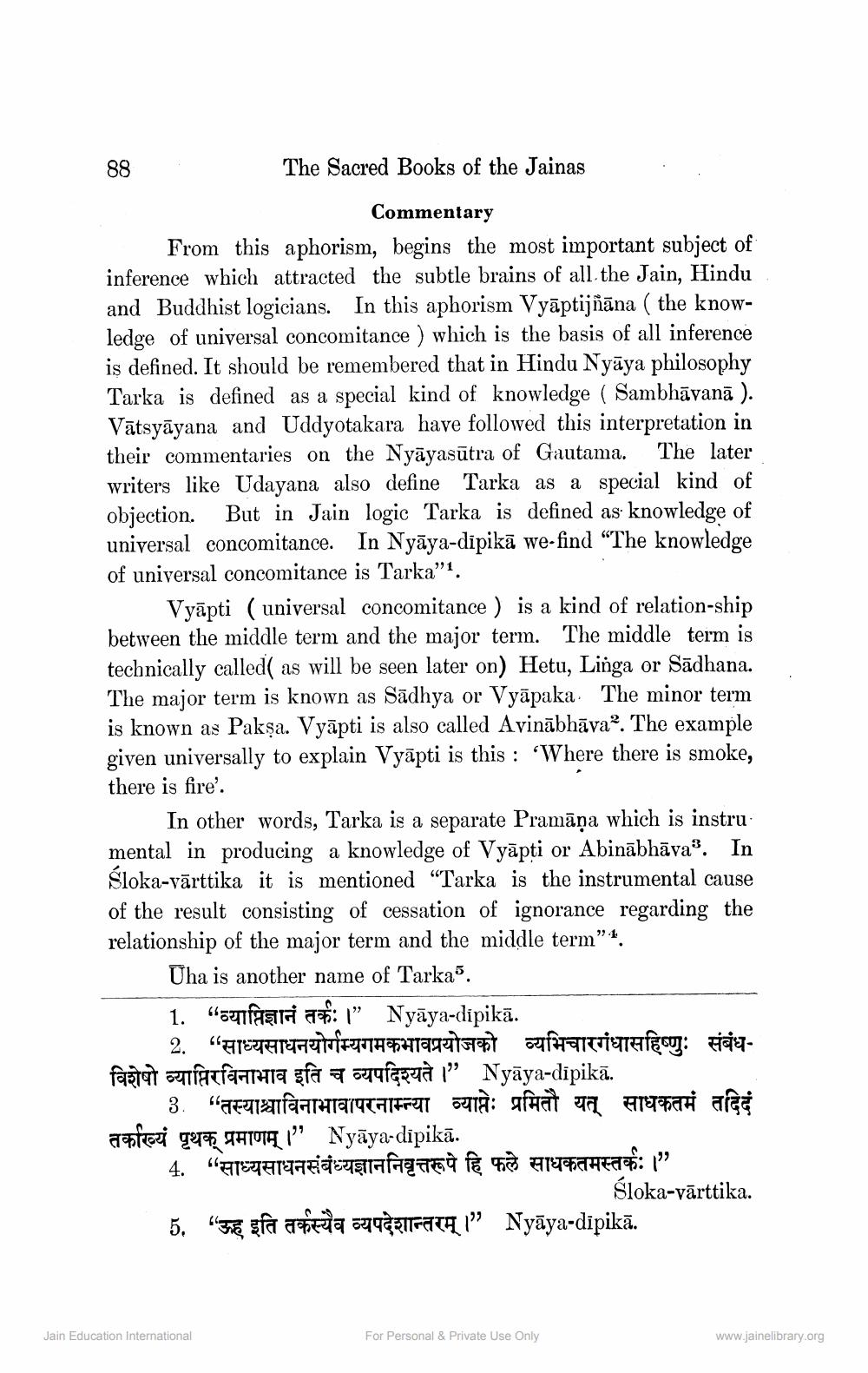________________
The Sacred Books of the Jainas
Commentary
From this aphorism, begins the most important subject of inference which attracted the subtle brains of all the Jain, Hindu and Buddhist logicians. In this aphorism Vyāptijñāna ( the knowledge of universal concomitance) which is the basis of all inference is defined. It should be remembered that in Hindu Nyaya philosophy Tarka is defined as a special kind of knowledge (Sambhāvanā). Vatsyayana and Uddyotakara have followed this interpretation in their commentaries on the Nyayasutra of Gautama. The later writers like Udayana also define Tarka as a special kind of objection. But in Jain logic Tarka is defined as knowledge of universal concomitance. In Nyaya-dipika we-find "The knowledge of universal concomitance is Tarka".
88
Vyapti (universal concomitance) is a kind of relation-ship between the middle term and the major term. The middle term is technically called( as will be seen later on) Hetu, Linga or Sadhana. The major term is known as Sadhya or Vyapaka The minor term is known as Pakṣa. Vyapti is also called Avinābhava2. The example given universally to explain Vyapti is this: 'Where there is smoke, there is fire'.
In other words, Tarka is a separate Pramāņa which is instru mental in producing a knowledge of Vyapti or Abinābhāva3. In Śloka-värttika it is mentioned "Tarka is the instrumental cause of the result consisting of cessation of ignorance regarding the relationship of the major term and the middle term "4.
Üha is another name of Tarka.
1. "fia: " Nyaya-dipikaā.
2. “ साध्यसाधनयोर्गम्यगमकभावप्रयोजको व्यभिचारगंधासहिष्णुः संबंधविशेषो व्याप्तिरविनाभाव इति च व्यपदिश्यते ।”_Nyāya-dipika.
3. " तस्याश्चाविनाभावापरनाम्न्या व्याप्तेः प्रमितौ यत् साधकतमं तदिदं तर्काख्यं पृथक् प्रमाणम् ।” Nyāya-dipika.
4. “ साध्यसाधनसंबंध्यज्ञाननिवृत्तरूपे हि फले साधकतमस्तर्कः । "
5. " ऊह इति तर्कस्यैव व्यपदेशान्तरम् ।” Nyāya-dipika.
Jain Education International
For Personal & Private Use Only
Śloka-värttika.
www.jainelibrary.org




